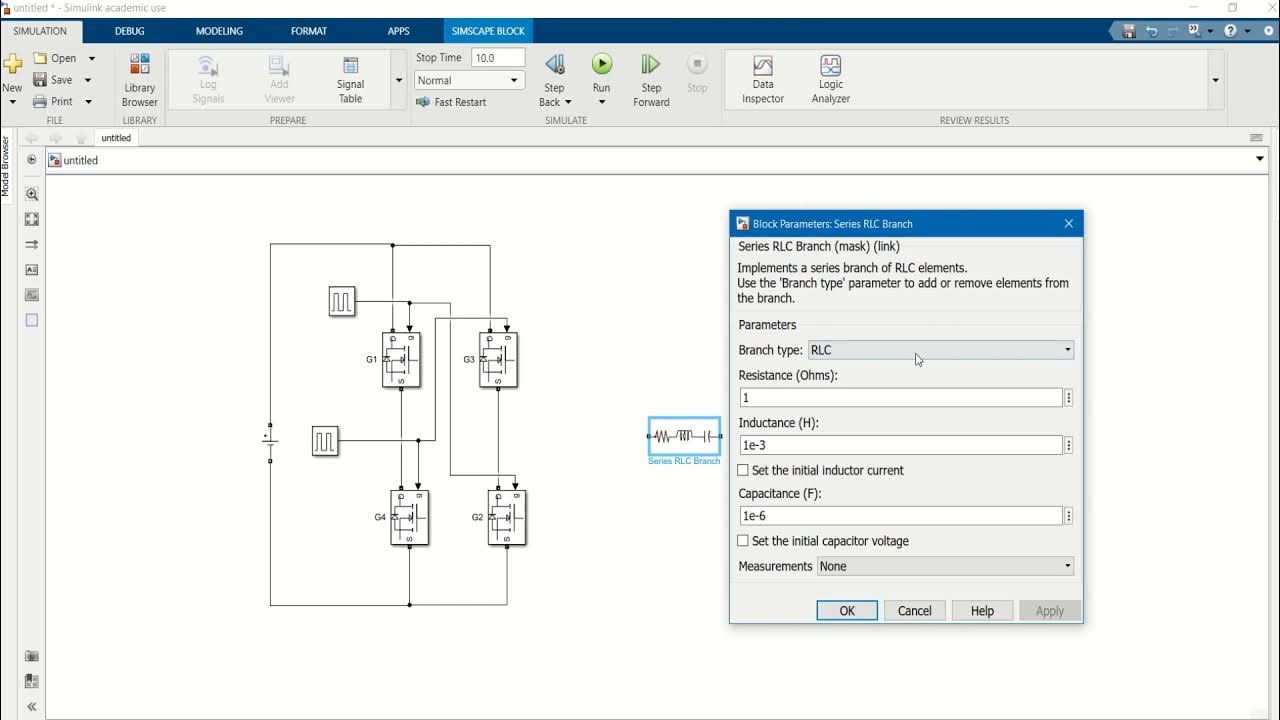Three Phase Converters II
Summary
TLDRThis NPTEL lecture delves into advanced power electronics and control, focusing on the operation of a 3-phase converter. It explores scenarios where the firing angle alpha exceeds 60 degrees, leading to discontinuous operation in highly inductive loads. The lecture discusses the waveform changes in half-controlled converters, the impact on voltage and current, and the transition from a 6-pulse to a 4-pulse output. It also touches on power quality issues, the benefits of multiple diode-based rectifiers, and the significant reduction in total harmonic distortion (THD) with 12-pulse converters. The lecture concludes with a comparison of 6-pulse and 12-pulse converters, emphasizing the importance of source inductance and its effect on power factor and THD.
Takeaways
- 📈 The lecture discusses the behavior of a 3-phase converter, specifically in scenarios where the firing angle alpha is greater than 60 degrees, leading to discontinuous operation.
- 🔄 For alpha > 60 degrees, the converter operates in a mode where the waveform changes from a 6-pulse to a 4-pulse form due to the natural commutation of thyristors.
- 🌀 It is assumed that the load is highly inductive, which affects how the current flows and when the thyristors conduct or stop conducting.
- 🕒 The timing of the thyristors' conduction is crucial and is detailed with respect to specific angles and time intervals within the converter's operation.
- 🔗 The output voltage waveform and the current through the thyristors are described in detail, highlighting the sequence of events during the converter's operation.
- 📊 The calculation of the RMS and average output voltage is discussed, with formulas provided for different conditions of the firing angle.
- 🔌 The impact of the firing angle on the input power factor and the RMS value of the voltage is analyzed, showing how these values change with different angles.
- 🌐 The discussion includes the use of a 3-phase full-wave half-controlled rectifier with free-wheeling action, detailing the conduction sequence and the resulting voltage waveforms.
- 🔧 The lecture addresses power quality issues, such as Total Harmonic Distortion (THD) and power factor, and how they are affected by the number of pulses within a cycle and the type of load.
- 💡 The benefits of using a multiple diode-based rectifier are explored, including the reduction of THD and the improvement of the input power factor without the need for a triggering circuit.
- 🔮 The lecture concludes with an analysis of a 12-pulse converter, which offers significant improvements in power quality by reducing harmonic distortion and providing a more sinusoidal current profile.
Q & A
What is the topic of the NPTEL lecture?
-The topic of the NPTEL lecture is 'Advance Power Electronics and Control', focusing on 3-phase converters.
What happens when the firing angle alpha is more than 60 degrees in a half-controlled converter?
-When the firing angle alpha is more than 60 degrees, discontinuous operation starts in a half-controlled converter, leading to a 4-waveform output instead of the usual 6 waveforms.
What is the significance of the inductive load assumption in the discussed converter?
-The assumption of a highly inductive load is significant as it influences the conduction and commutation processes within the converter, affecting the waveform and operation modes.
How does the output voltage waveform change with alpha > 60 degrees in a 3-phase full-wave half-controlled converter?
-With alpha > 60 degrees, the output voltage waveform changes from a continuous 6-pulse to a discontinuous waveform, affecting the conduction sequence and leading to different voltage and current profiles.
What is the impact of the firing angle on the input power factor of a 3-phase full-wave half-controlled rectifier?
-The firing angle impacts the input power factor by affecting the average voltage and RMS voltage, which in turn influence the ratio of active power output to RMS power input.
Why is a 12-pulse converter considered better in terms of power quality?
-A 12-pulse converter is considered better for power quality because it significantly reduces the total harmonic distortion (THD) and provides a closer to sinusoidal current profile, thus improving the input power factor and reducing harmonics in the input current.
What is the role of the transformer in a 12-pulse converter system?
-In a 12-pulse converter system, the transformer plays a crucial role by providing a phase shift between the primary and secondary currents, which helps in achieving a 12-pulse operation by combining currents from both delta and star configurations.
How does the load current affect the THD in a 6-pulse converter?
-In a 6-pulse converter, the load current has a significant impact on the THD. As the load current increases, the THD decreases due to the transition from discontinuous to continuous conduction modes, which reduces harmonic content.
What is the effect of source inductance on the power factor in a 12-pulse converter?
-In a 12-pulse converter, the source inductance initially has a detrimental effect on the power factor, causing it to decrease. However, beyond a certain load current, the impact of source inductance on the power factor becomes less significant.
How does the conduction angle affect the output voltage in a 3-phase converter?
-The conduction angle, or firing angle, directly affects the output voltage by determining the point at which the thyristors are triggered, thus influencing the duration for which they conduct and the resultant voltage waveform.
Outlines

This section is available to paid users only. Please upgrade to access this part.
Upgrade NowMindmap

This section is available to paid users only. Please upgrade to access this part.
Upgrade NowKeywords

This section is available to paid users only. Please upgrade to access this part.
Upgrade NowHighlights

This section is available to paid users only. Please upgrade to access this part.
Upgrade NowTranscripts

This section is available to paid users only. Please upgrade to access this part.
Upgrade Now5.0 / 5 (0 votes)





